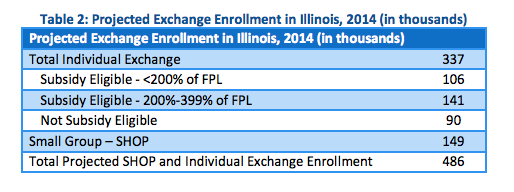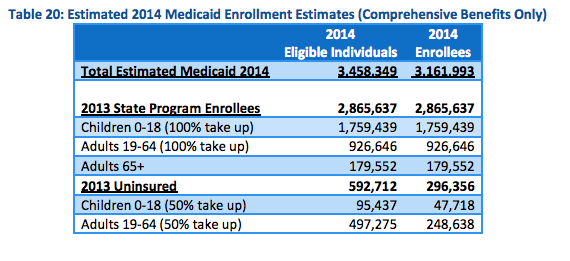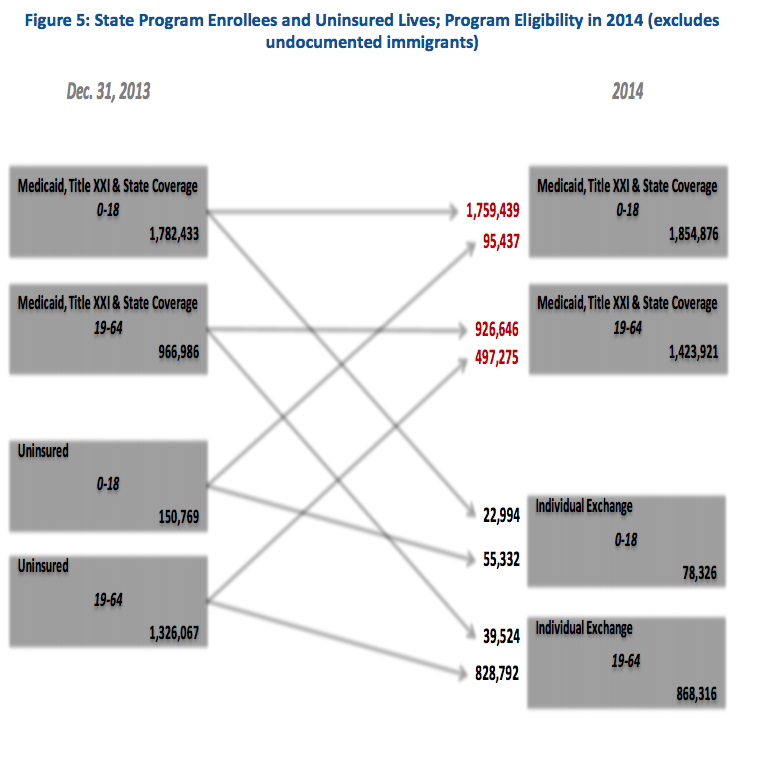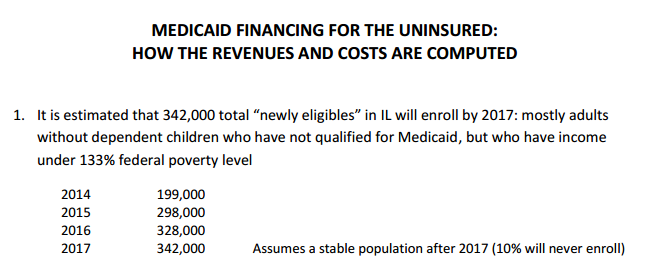ObamaCare in Illinois: Reality check
In its first annual report, GetCovered Illinois touts “succeeding in enrolling more than 600,000 people in health coverage through the Illinois Health Insurance Marketplace and Medicaid.” But by very selectively picking and choosing what information to make public, Illinois officials are failing to provide any real insight into whether the state has actually achieved its...
In its first annual report, GetCovered Illinois touts “succeeding in enrolling more than 600,000 people in health coverage through the Illinois Health Insurance Marketplace and Medicaid.” But by very selectively picking and choosing what information to make public, Illinois officials are failing to provide any real insight into whether the state has actually achieved its goal to “dramatically reduce the number of uninsured in the State.”
Only by examining the state’s original goals and targets can one evaluate whether the Affordable Care Act is delivering. The question that deserves to be answered is: How many previously uninsured Illinoisans now have coverage, and how many Illinoisans were shuffled from one form of coverage to another?
ObamaCare exchange enrollment goal
The administration’s original goal was to enroll 486,000 Illinoisans in the ObamaCare health-insurance exchange in 2014. This goal included both uninsured individuals, as well as those who already had coverage. But only 217,000 Illinoisans “enrolled” – less than half the state’s goal.
But since the state has yet to reveal the number of enrollees who have actually paid for a plan, we don’t actually know who obtained coverage. The distinction is critical. The reported enrollment number counts people who put a plan in their shopping cart, but not who has actually paid. Unless we know who has actually paid, we can assume that, based on private sources, the state’s ObamaCare exchange enrollment number for 2014 is likely even lower.
Based on the state’s own take-up rate estimates for the previously uninsured and insured populations, the state needed to enroll about half of the previously uninsured eligible non-elderly adults, or about 414,000 people, into the exchange to reach Illinois’ total exchange enrollment goal.
By either measure, the Quinn administration has fallen woefully short.
Medicaid enrollment goal
The state explicitly set out to enroll one-half of Medicaid-eligible, non-elderly uninsured adults in 2014. While the administration is celebrating the enrollment of 400,000 into the Medicaid program, this also deserves a closer look.
Though the state has repeatedly revised its Medicaid enrollment target, the state originally aimed to enroll one-half of non-elderly, Medicaid-eligible adults in 2014, or 249,000 people.
The state may have hit its goal of enrolling 249,000 of the previously uninsured into Medicaid, but without knowing how many of these enrollees were previously eligible for Medicaid but not enrolled or how many dropped their private to enroll in the program, it is not possible to know whether this target was met.
Overall impact
It is still unclear how far the Quinn administration moved the needle on the uninsured. According to a recent analysis of Gallup Analytics survey data, the state is estimated to have reduced its adult non-elderly, uninsured population by about one-quarter. This is far short of the administration’s explicit and implied goals of reducing the number of uninsured, non-elderly adults by one-half in 2014.
Not only did the state’s exchange enrollment effort fail spectacularly, but for all the efforts and resources, the state also has not substantially reduced the overall uninsured rate. In fact, we are now close to where we were in the first half of 2008 before the financial crisis. The fact that the state only met half of its goal for 2014, rather than its continuous self-promotion tour, should be transparent to the public.
A recent report from Gallup-Healthways Well-Being Index points to an even bigger miss. It shows Illinois’ uninsured rate dropping from 15.5 percent in 2013 to 12.3 percent mid-year in 2014. That is about one-fifth drop in the adult uninsured population.
The bottom line
For all of the resources spent and the disruptions imposed upon the state’s families and businesses, Illinoisans deserve to know the full reality of ObamaCare. Instead, the Quinn administration is using the GetCovered Illinois annual report to promote and advance GetCovered Illinois.
A fair account would focus less on cheerleading and more on the actual impact of the health-insurance overhaul. It is time for Illinois state officials to tell the truth when it comes to ObamaCare in Illinois.




